The Early 20th-Century ID Cards That Kept Trans People Safe From Harassment
The radical days of the Weimar Republic, just before the rise of Nazism.
Katharina T., a resident of Berlin in the early 20th century, had a deep voice and masculine appearance, and preferred to wear men’s clothing at home and in public. In 1908, they—there’s no record of which pronoun Katharina preferred—went to visit the sexual reformer and “sexologist” Magnus Hirschfeld, to apply for official documentation that would allow them to wear men’s clothing in public: a “transvestite pass.”
Perhaps dozens of these passes were granted by German police between 1909 and 1933, the year Adolf Hitler became chancellor. The term “transvestitism” at that time encompassed people of all gender identities, from those who occasionally wore men’s or women’s clothes on weekends, to those who today might well identify instead as transgender, a term that was not in common usage at the time. Cross-dressing individuals were vulnerable to arbitrary decisions of the police, usually according to how well they “passed.” While it wasn’t illegal to cross-dress, per se, the practice often led to charges of being a “public nuisance,” which could mean six weeks’ imprisonment or a fine of 150 marks—and police were “often keen to exercise their extensive regulatory powers,” writes historian Kate Caplan in “The Administration of Gender Identity in Nazi Germany,” a 2011 paper in History Workshop Journal.

Hirschfeld examined Katharina, quizzed them on their life and sexual history, and then wrote a report to the police supporting the application. In it, he argued that Katharina’s preference for men’s clothing corresponded to their inner self. If they couldn’t wear them, their well-being and even survival would be jeopardized. In time, they did receive a pass, though for unknown “formal legal reasons,” a further request to adopt a male name was not granted. This, writes Katie Sutton, a scholar of German history and gender studies at Australian National University, in German Studies Review, is the first known example of someone seeking such a pass. By 1912, probably as a result of Hirschfeld’s pressure on the police, the pass became a specific permit in what would become the Weimar Republic.* (That they remained hand-written suggests that few were issued.)
Hirschfeld was one of a few doctors in the city who helped people with minority sexual identities. Meanwhile, other people became increasingly aware of the issues they faced. A 1906 German newspaper report, quoted in Robert Beachy’s Gay Berlin: Birthplace of a Modern Identity, tells the story of a person who was assigned female at birth**, but only appeared “unsuspicious” if allowed to wear men’s clothing. The paper chastises city officials: “There are men with the faces of women, and women with the faces of men. If necessary, police officials need to be schooled by Dr. Hirschfeld. Such mistrust as in this case should not be based on ignorance.” This was typical of a certain segment of Weimar society, Beachy says. “You can sort of see that there was, at least in some quarters, a liberal tolerance that was clearly visible.”
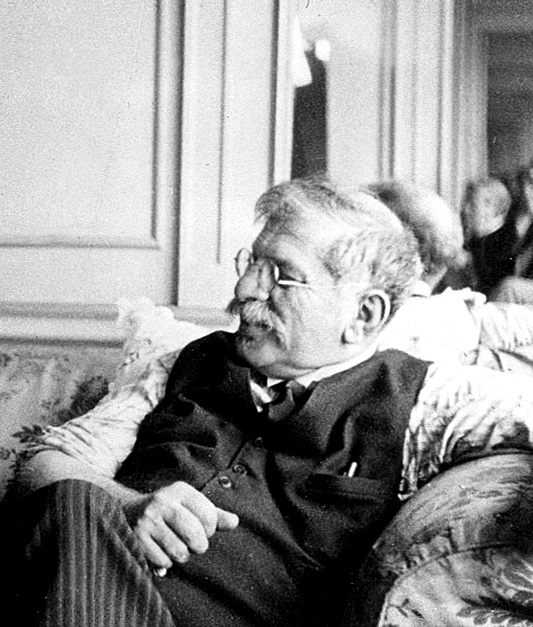
Hirschfeld was stocky and mustachioed, a pacifist, anti-imperialist Jew. He was also likely gay, with two younger lovers—Tao Li Shiu and Karl Giese—though he generally wrote about “homosexuals” at a remove. By the time he saw Katharina, he had been writing about complex sexual identities for well over a decade. After qualifying as a doctor, Hirschfeld began to work specifically on minority sexual identities, and published a selection of books on gender and sexuality, including, in 1910, The Transvestites. In 1919, he started the Institute of Sex Research, a nonprofit foundation that provided services from marriage counseling to STI treatment to early attempts at hormone therapy. Backed by anonymous wealthy benefactors, the Institute treated rich and poor alike, and sought “advancement of scientific research into all aspects of sexual life and of sex education.”
By medicalizing—arguably pathologizing—people’s sexual identities, Hirschfeld believed he would better be able to make the case that sexual identity is as innate as eye color***. Perhaps most radically, he made a clear distinction between gender identity and sexual orientation, says Beachy, and had an activist bent that carried through to his work with these transvestite passes. “He thought it was really unfair that they weren’t able to go out in the public the way they felt most comfortable,” Beachy says.
![Hirschfeld described another of his patients, born either male or intersex, as displaying "androgyny, transvestism and homosexuality. ... He is wearing mourning clothes [on the left] because his mother has died; an indication of how seriously he takes his transvestism."](https://img.atlasobscura.com/Et6BUvXI6IlQF0Tz0WXte88-Pfyi_Mz0Gk3KXV8i-yc/rt:fill/w:1200/el:1/q:81/sm:1/scp:1/ar:1/aHR0cHM6Ly9hdGxh/cy1kZXYuczMuYW1h/em9uYXdzLmNvbS91/cGxvYWRzL2Fzc2V0/cy9lMWYxMTJkZTMy/YWMyYzQyZTFfU2V4/dWFscGF0aG9sb2dp/ZSBjb3B5LmpwZw.jpg)
Hirschfeld claimed to have made the acquaintance of far more than 10,000 gay men and women, and cross-dressers, in Berlin alone. “He was considered somebody who knew everybody,” Beachy says—at once familiar with the so-called “subculture,” as a gay man himself, and respectable in the eyes of both his patients and the general public. “People would come to him, sometimes they’d send their children to him .… Anybody who thought themselves to be in this category would want to go and talk to an expert, especially if they were middle-class or elite, and had resources.” Often, Hirschfeld was that expert.
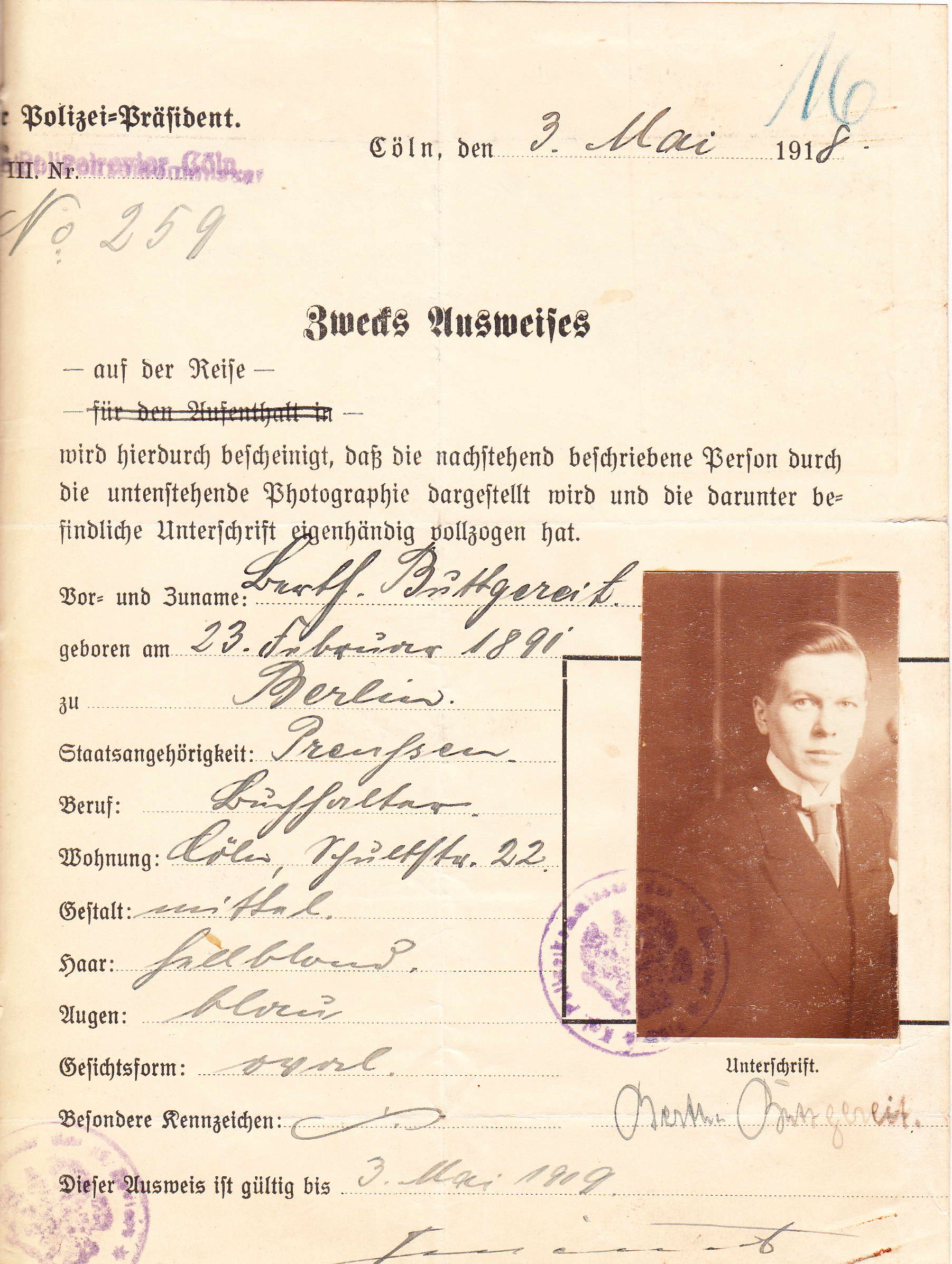
In 1912, a 21-year-old then named Berthe Buttgereit visited Hirschfeld as part of an application for a transvestite pass. Buttgereit was assigned female at birth**, had grown up in Berlin, and attended a coeducational school where, writes the German academic Edwin In het Panhuis, he was described as “energetic and purposeful as a child, and behaved like a boy,” with little interest in the girls’ games. After receiving the pass, Buttgereit was able to live publicly as a man. In 1918, he also received a “transvestite passport,” permitting travel to Cologne where, In het Panhuis writes, “presumably he wanted to build a new life.”
Seven years later, Buttgereit submitted a request to officially become known as Berthold instead of Berthe. The report stressed that Buttgereit “neither felt nor acted like a woman.” The request was granted. Later in life, he attempted, unsuccessfully, to marry the woman he had by that point lived with for eight years. He noted their long relationship in the supporting report as an indication of “constancy and harmony,” which would lend itself well to a happy marriage. But the mayor, after seeing Buttgereit’s birth certificate, denied the request.
Buttgereit later attempted to change his birth certificate, but it is not known whether he was successful. What we do know, however, is that he remained in Cologne for the rest of his life. He died around 1984, and apparently had escaped the scrutiny of the Nazis. This, In het Panhuis writes, is “remarkable,” as he would have been known to the police and perhaps even on a particular register as a “transvestite.”
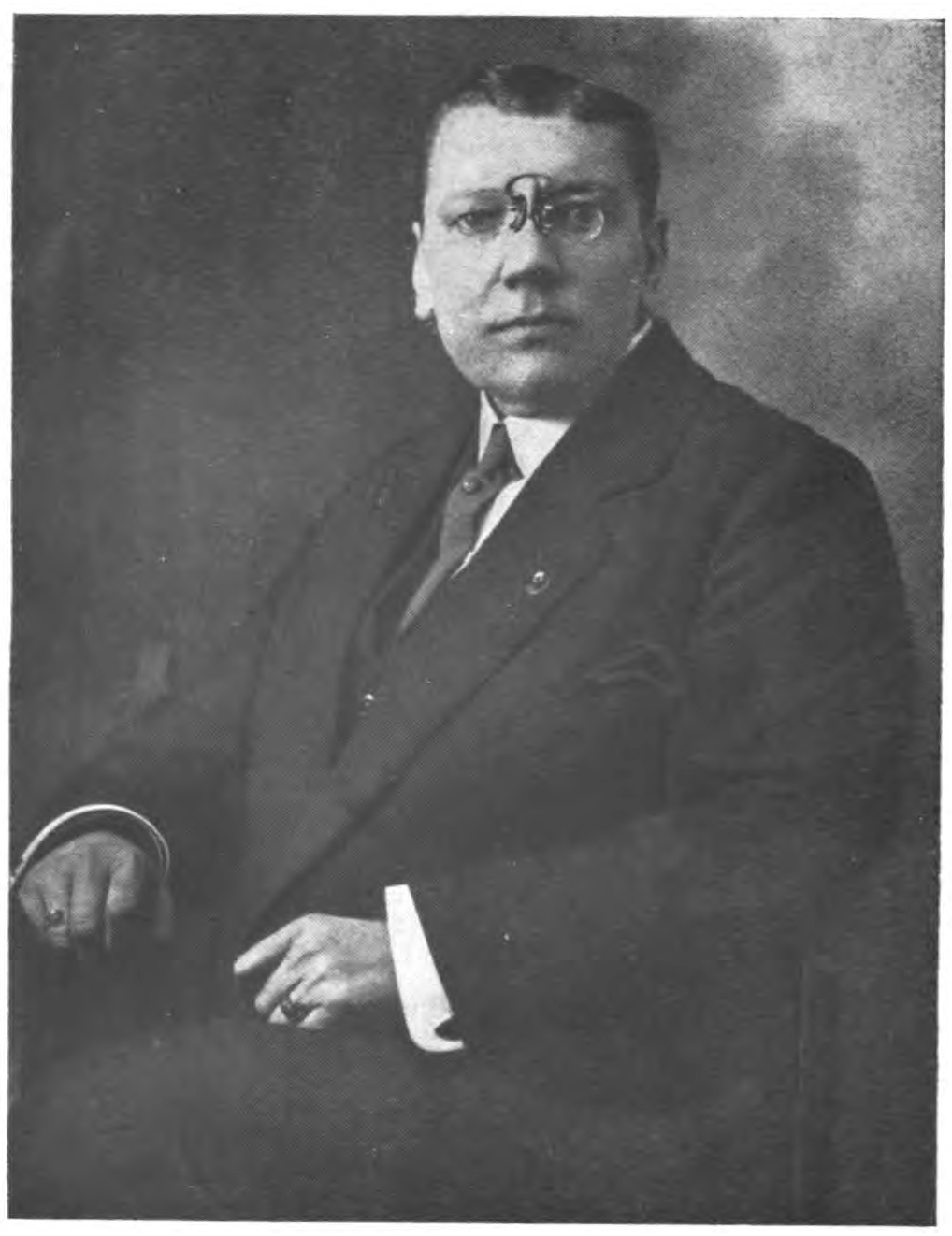
Today, Buttgereit would almost certainly be described as transgender rather than transvestite. Throughout the 1920s, Hirschfeld edged closer to the idea, and used the expression “total transvestitism” to describe it. In his 1926 book Sex Education, Hirschfeld published anonymous photographs of Buttgereit in the section titled “Total Transvestitism.” “That’s more or less the equivalent of transgender identity the way we’d think of it today,” Beachy says. People who sought to transition medically were given access, by Hirschfeld, to experimental hormone therapies and even early sex reassignment surgeries.
Historians don’t know how much protection from harassment, by police or members of the public, “transvestite passes” ultimately gave their holders, Beachy says. “How many people actually received them, what their influence would have been exactly—it’s really hard to say.” But, in the two decades after they were first issued, the cultural climate had shifted, and it became easier and easier for transvestites, or transgender people, to wear whatever clothing they liked.

Queer activism, led by Hirschfeld and many of his colleagues, friends, and acquaintances, was having an impact. The Institute “championed the principle that science, rather than religious morality, ought to dictate how state and society responded to sexuality,” writes Laurie Marhoefer, in Sex and the Weimar Republic. By 1929, many forms of female sex work had been legalized. There were scores of gay, lesbian, and “transvestite” publications. And Germany came very close to repealing a law prohibiting sex between two men. There was a selection of transvestite bars in Berlin, including the famous Eldorado, which attracted throngs—straight and queer alike.

But in the early 1930s, the rise of Nazism brought it all to an end. In May 1933, students and armed soldiers broke into the Institute and confiscated its library. Less than a week later, at a public book burning in the city center, they destroyed tens of thousands of irreplaceable photographs and scholarly works on human sexuality. Hirschfeld, who was lecturing in the south of France at the time, watched on a newsreel as his life’s work went up in flames. He never returned to Germany.
By the end of the year, the Eldorado and other gay bars and clubs were closed, queer magazines and newspapers were forced to fold, and police were ordered to supply the Gestapo with lists of all men engaged in homosexual activities. Between 1933 and 1945, some 100,000 German people from these lists were arrested. Lesbianism, however, was not criminalized—the lower status of women meant that it was not generally regarded as a social or political threat. It’s difficult to know how the Nazis responded specifically to “transvestites,” such as Buttgereit, who were not obviously gay men.
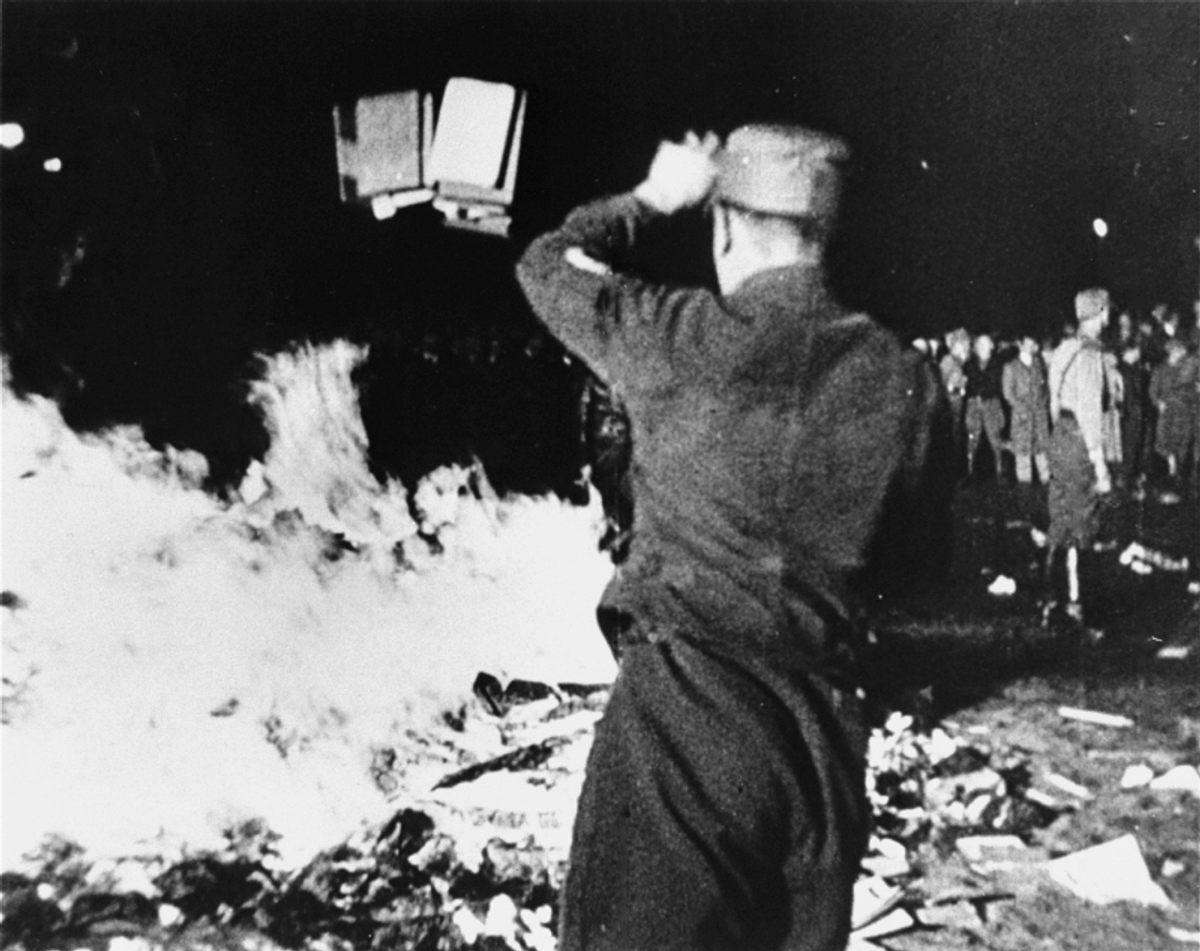
In 1941, a case landed on the desk of the German Interior Ministry, regarding a person known as Alex S., born Jenny S. in 1898. Alex S. had been living as a man since 1920 and was applying to alter his birth certificate accordingly. Perhaps surprisingly, even though the Ministry didn’t allow the change, it also did not repeal his 1920 name change or say that he would have to return to living as a woman. Indeed, writes Caplan, they “felt it would be an ‘unjustifiable hardship’ and ‘probably quite impossible’ for him to have to start living as a woman again.” The passes might have been obsolete by then, but it’s impossible to say whether their impact was as well.
* Correction: This story was updated to reflect that the Weimar Republic was not yet in place in 1912.
** Correction: This story was changed to replace the phrase “biologically female” with “assigned female at birth.”
*** Correction: This story was changed to remove the phrase “and biological sex.”
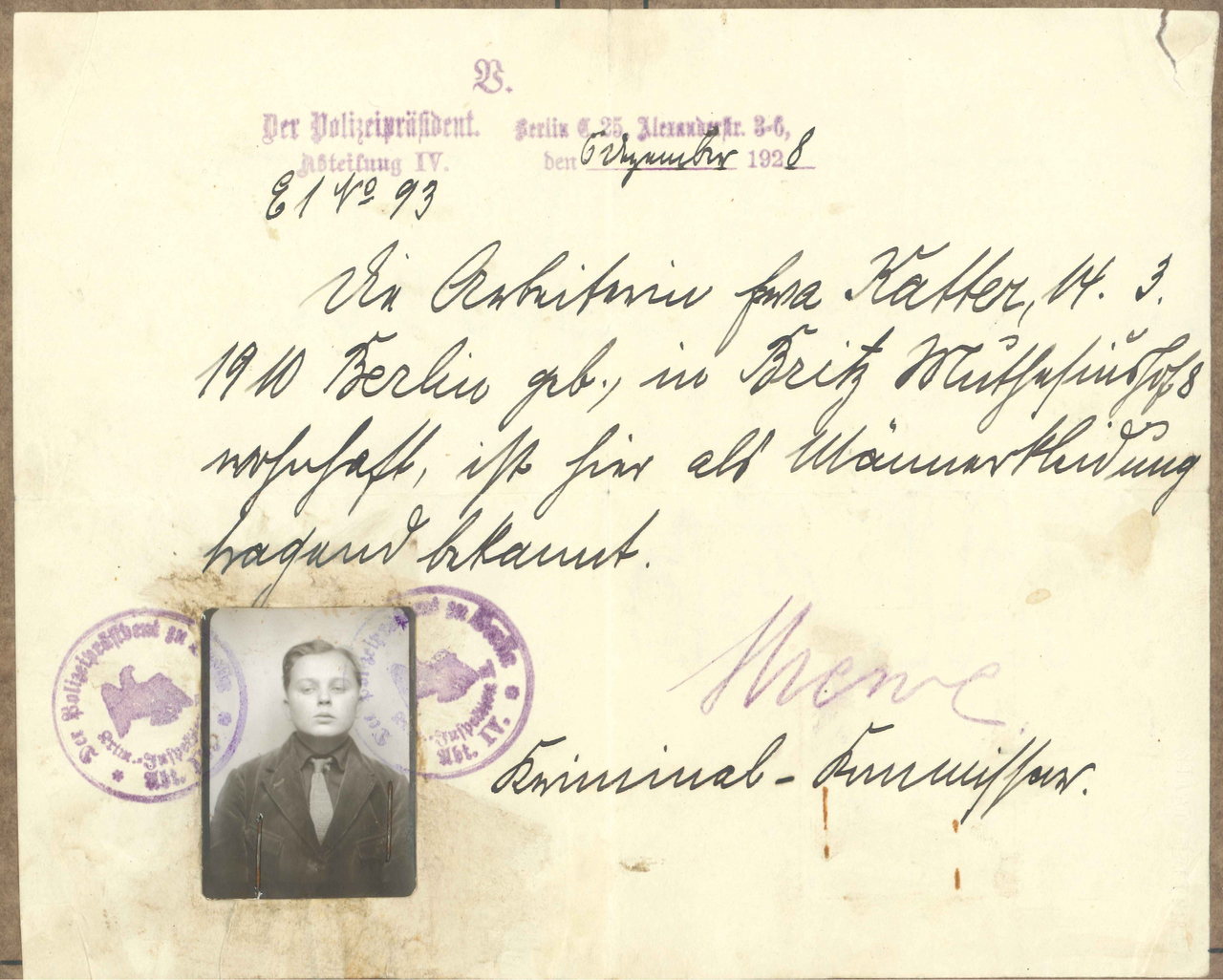




















Follow us on Twitter to get the latest on the world's hidden wonders.
Like us on Facebook to get the latest on the world's hidden wonders.
Follow us on Twitter Like us on Facebook